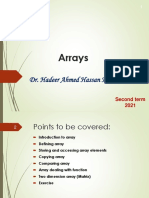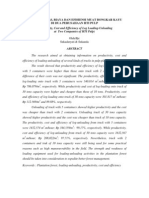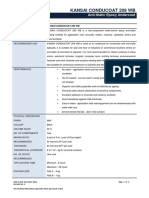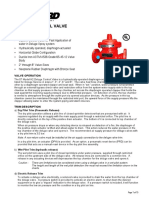0% found this document useful (0 votes)
12 views45 pagesLecture 10
The document provides an overview of arrays and vectors in C++ and Python, highlighting their declaration, initialization, and iteration methods. It covers the differences between fixed-size arrays and dynamic vectors, as well as memory allocation and pointer usage in C++. Additionally, it discusses operations such as sorting and searching within arrays and vectors.
Uploaded by
ryyjyg9p2rCopyright
© © All Rights Reserved
We take content rights seriously. If you suspect this is your content, claim it here.
Available Formats
Download as PDF, TXT or read online on Scribd
0% found this document useful (0 votes)
12 views45 pagesLecture 10
The document provides an overview of arrays and vectors in C++ and Python, highlighting their declaration, initialization, and iteration methods. It covers the differences between fixed-size arrays and dynamic vectors, as well as memory allocation and pointer usage in C++. Additionally, it discusses operations such as sorting and searching within arrays and vectors.
Uploaded by
ryyjyg9p2rCopyright
© © All Rights Reserved
We take content rights seriously. If you suspect this is your content, claim it here.
Available Formats
Download as PDF, TXT or read online on Scribd
/ 45























































































